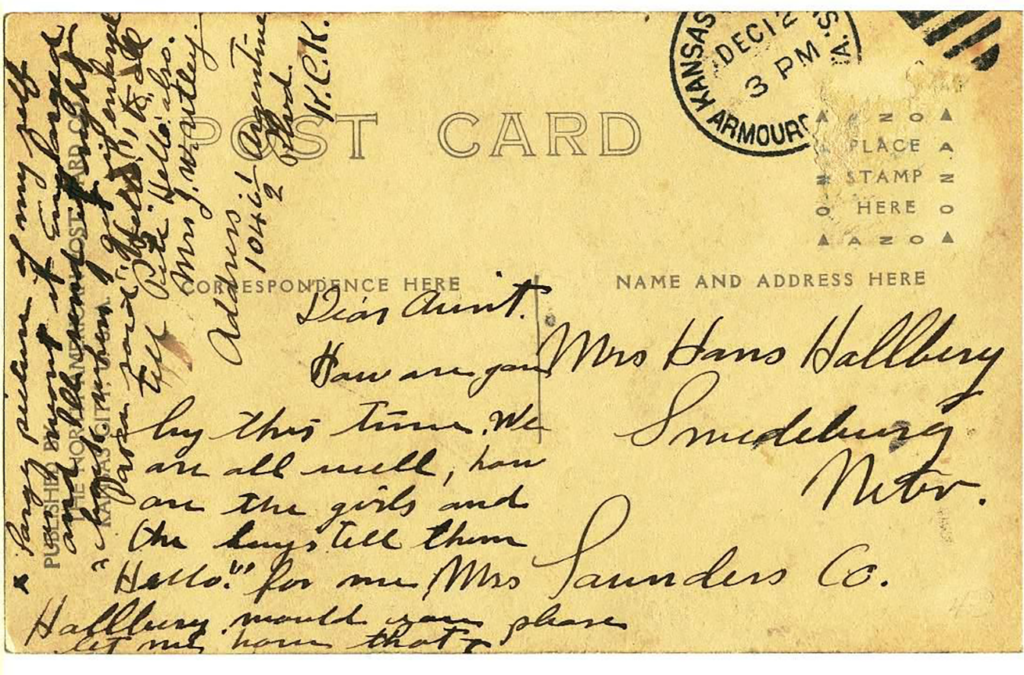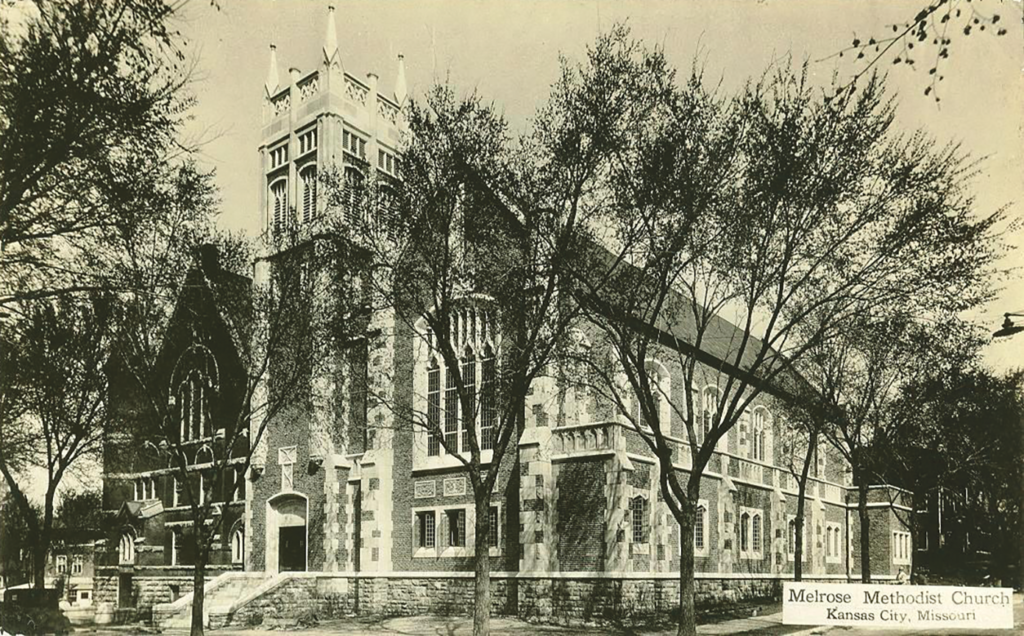
By Michael Bushnell
A far cry from its humble beginnings in 1887 as a tent, this week’s real photo postcard shows Melrose Methodist Episcopal Church, located at the corner of Windsor and Bales Avenues.
The church was founded by Methodist Minister Nathan Scarritt, who began his career as a circuit rider and missionary assigned in 1848 to assist Thomas Johnson at the newly established Shawnee Indian Mission in what was then Indian Territory. The purpose: to minister to the Shawnee, Delaware and Wyandot Indian tribes that occupied the general area.
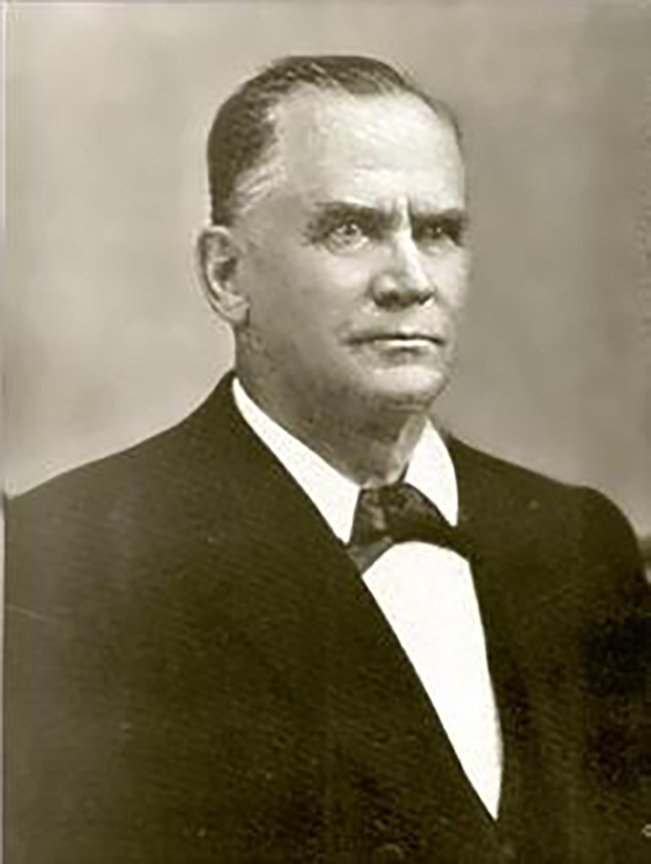
Just prior to the Civil War, growing hostilities along the Missouri-Kansas borders forced Scarritt from his Westport area home and from his work with Johnson. Having large land holdings on the bluffs overlooking the Missouri River Valley just east of downtown, Scarritt moved his family to his cabin on Scarritt Point until his home could be completed roughly a mile east of the cabin.
Scarritt wrote in 1861, prior to his move to the bluffs, “By that time, Kansas, and indeed the whole western border, had become so distracted by the troubles of the war that I thought it best to desist from my itinerant work and to seek for myself and my family a little house in some quiet place, if such place could be found, until these troubles should be over. Several [of our preachers] have had their houses stolen by ‘Jayhawkers.’ Repeated threats of hanging, shooting, etc., have been made against them.”
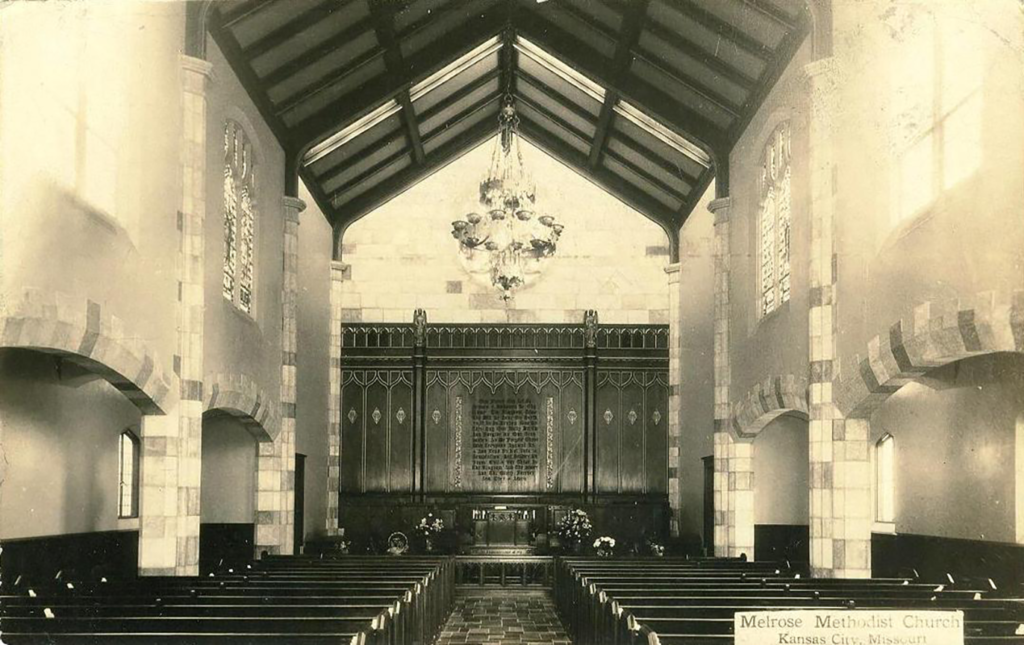
Following the Civil War, Scarritt remained active in civic affairs, buying and selling real estate, much of which was in present-day downtown and points east along the bluffs.
In the fall of 1886, Reverend Scarritt submitted the plat for the Melrose Subdivision, a large plat of land that encompassed the site of his original log cabin on Scarritt Point and lands due east to roughly Gladstone Boulevard and Askew Avenues. Other subdivision plats followed and by late 1887, all of what is currently considered the Scarritt Point district had been platted into subdivisions.

On a stormy Sunday in May of 1887, Reverend Scarritt and Bishop Eugene Hendrix and their respective families were joined by roughly 18 parishioners under a canvas tarp at the corner of Windsor and Bales to officially break ground on a new church to serve the growing Northeast community. The original building was constructed in the Gothic Revival Style at a cost of $30,000, all donated by Reverend Scarritt.
In 1928, the “new” sanctuary, modeled after Melrose Abbey in Scotland, was built immediately east of the original church building to accommodate the growing congregation. The original rose window was moved from the old sanctuary to the north wall of the new sanctuary and is easily visible from Gladstone Boulevard to the north. Four stained glass windows, two on each side at the front of the sanctuary, depict St. Matthew, St. Mark, St. John and St. Luke. The imposing dark wall in front is built entirely of quarter-sawn oak and has the Lord’s prayer inscribed into it. Made to look as if it were constructed of stone, the archways on either side of the sanctuary are actually made of a composite material, something brand new for early 20th century construction. The faux-stone floor is actually early linoleum, colored and made of pitch and burlap.
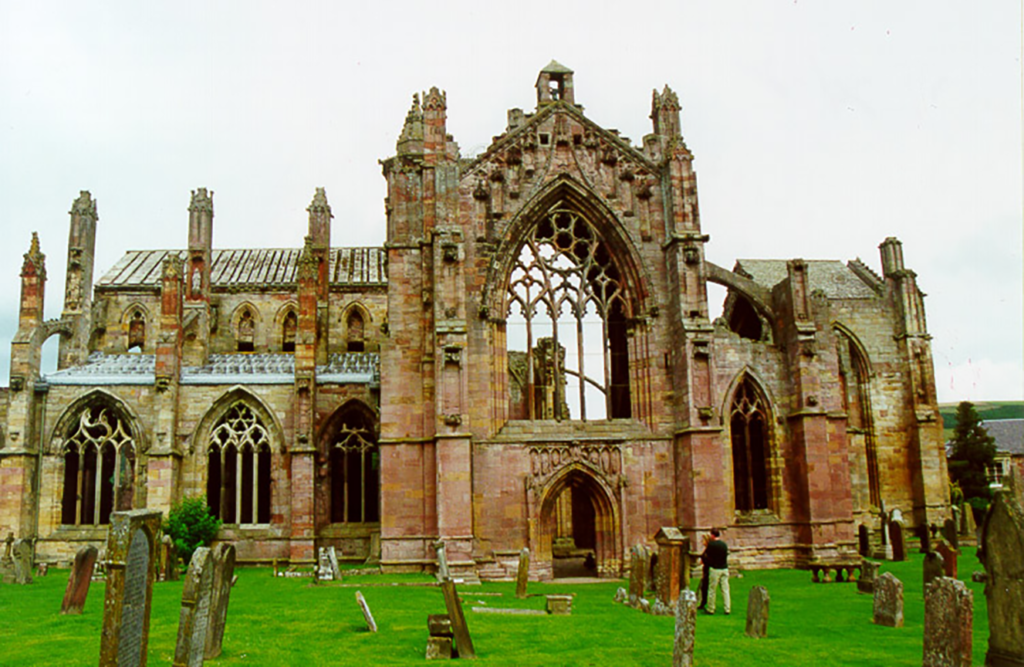
The sanctuary maintained much of its original charm through the 2000’s until sadly, in 2010, faced with dwindling attendance and a mandate from the Methodist District, Melrose closed after an almost 125 year history of serving the Historic Northeast community.
Shortly after the church’s closing, all of the church’s records along with historic pieces such as an original 1887 stained glass window, offering plates from the dedication service in 1887 and the original pulpit, were donated to the Kansas City Museum. The church did not sit vacant long. The Methodist District voted to donate the facility to a Pentecostal congregation that had started construction of a new church near 9th street and Prospect. It is once again an active, thriving congregation in one of the oldest worship edifices in the city.
This postcard was a gift from the family of Catherine Snell, a longtime Melrose parishioner who passed away in 2005. It was published by the North American Postcard Company of Kansas City, Missouri.
